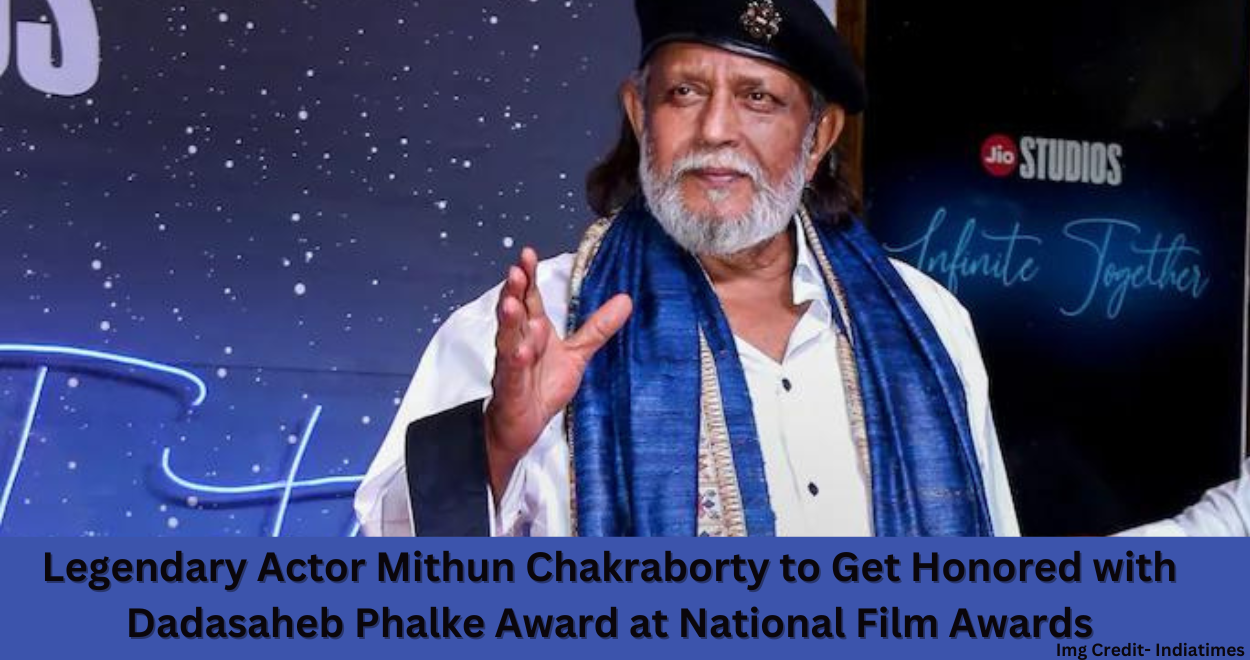The news came from Union Minister Ashwini Vaishnaw. He made the announcement, a quiet nod to Chakraborty’s long and winding journey through cinema, the kind that leaves a mark on those who care to watch.
The award would be handed over during the 70th National Film Awards, come October 8. Mithun had first walked into the spotlight in 1976, with Mrigayaa. He snagged the National Award for Best Actor, setting the tone for what would come later. But it was the 1982 hit Disco Dancer that turned him into a name, one people could hardly ignore. A little fire, a little flash.
He played roles in Agneepath and Kasam Paida Karne Wale Ki that cut deeper. Now, he judges reality shows, a steady eye on the talent.
What Does the Dadasaheb Phalke Award Represent?
India’s cinema world has its highest badge of honor, the Dadasaheb Phalke Award, handed out each year at the National Film Awards. It’s named after the guy who kicked off Indian filmmaking, the one who rolled out the first feature in 1913. They made this award a thing in ’69, and now Chakraborty’s up next, the 54th name on a list of 53 big shots. This club includes the Kapoor trio—Prithviraj, Raj, and Shashi—along with voices like Lata Mangeshkar and Asha Bhosle. Directors like BR Chopra and Yash Chopra earned their spots too. Waheeda Rehman walked away with the award in 2021.
Conclusion
Mithun Chakraborty started out with Mrigayaa and turned himself into a legend with Disco Dancer and a line of performances that never missed. His path through Indian cinema is a story worth telling. Decades in, and the man’s left his fingerprints all over the business. He’s done it all—action, drama, even judging reality shows. The Dadasaheb Phalke Award? It’s a nod to a legacy that’s hard to argue with, putting him in the same room as the greats. As he stands there, taking that honor, his influence still has young hopefuls and seasoned pros watching closely.
FAQs
1. What is the significance of the Dadasaheb Phalke Award?
Established in 1969, the Dadasaheb Phalke Award is the high watermark of Indian cinema, a badge of honor that glimmers like a neon sign in a foggy alley. Named for the man who spun the first feature-length tale in 1913, it’s handed out annually to those whose work doesn’t just entertain but reshapes the very fabric of film. It’s about impact, the kind that lingers long after the credits roll.
2. Why has Mithun Chakraborty been chosen for this honor?
Mithun Chakraborty’s journey through the flickering shadows of cinema is a testament to talent that doesn’t fade. He stepped onto the screen in 1976 with “Mrigayaa,” bagging a National Award that marked the beginning of something remarkable. By 1982, “Disco Dancer” had sealed his legend, yet it’s the range he shows in gritty roles like in “Agneepath” and “Kasam Paida Karne Wale Ki” that really counts. His performances carve out a depth that lingers, a legacy acknowledged by the Dadasaheb Phalke Award, recognizing his undeniable impact on film and audiences alike.
3. What does this award mean for Indian cinema today?
The Dadasaheb Phalke Award given to Mithun Chakraborty isn’t just a nod to the past; it’s a hard-boiled testament to cinema’s soul as a medium for storytelling across generations. It shines a light on the lasting value of real artistry and the depth of character in an industry too often captivated by the glitter of passing trends. Chakraborty’s honor whispers a truth: patience and grit are the cornerstones of a legacy that endures, offering a guiding star for filmmakers and actors to come.
Amit Gupta is a 2016 graduate of Delhi University, India. After working over a decade as an additional writer at TheScoopVilla, he decided to start his own news publication. He mainly focuses on Bollywood News, Hindi and South Indian Movies, Web series articles and editorials. He likes to cooking and play cricket in his free time. Follow On Facebook.


Rental savings, for business and tourism.
nissan qashqai rent a car https://neochorion.com /our-cars/?view=cardetails&carid=12 .